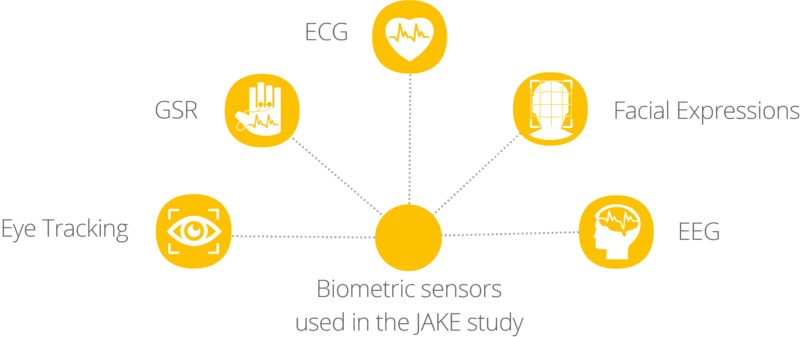“Autism Spectrum Disorder (ASD) is a neurodevelopmental disorder that affects more than 3.5 million people in the United States alone. Approaching better treatments is a principal goal of medicine and neuroscience, so that the potential burden from this disorder can be reduced.
The Janssen Autism Knowledge Engine (JAKE) represents one approach to this, using an array of biosensors, patient information, caregiver feedback, and medical records, to inform a better understanding of how autism can be treated. The hope is that these sensors and information can provide robust and objective information about how ASD is experienced, and how lives can be improved with the help of therapy and / or medication.
The following article is a validation study of the methods, showing the first steps to a brighter future with ASD research and treatment.”
At iMotions, we’re great believers in making the complex achievable and understandable – this goes not only for our research platform, but also for this blog. Recently, we have seen several high impact articles published, using iMotions to take on complex problems.
We want to show you the ins and outs of these articles, so you can see how iMotions works out in the field. We have chosen to focus on a new innovative piece of research that we feel exemplifies the iMotions approach to understanding human behavior.
Read on to learn about the groundbreaking new research being carried out.
Background
The study we’re looking at is concerned with Autism Spectrum Disorder (ASD). ASD is a multifaceted neurodevelopmental disorder – it consists of impaired social and communication skills, and constrained or repetitive behaviors. It affects about 1% of the population worldwide and is wide-ranging in severity across individuals.
Despite the impact in can place upon individuals and families, therapy remains the only approach that can positively affect people with ASD. One of the core goals of autism research is to better understand the disorder, by following treatment more closely, and examining the prevalence of ASD subtypes.
The Study
This challenge was taken on by Seth Ness from Janssen Research and Development (owned by Johnson and Johnson), along with colleagues from Duke University, Northeastern University, and the University of California (among others).
They designed the JAKE (Janssen Autism Knowledge Engine) system – a set of measurements designed to facilitate further understanding of autism. This study in particular set out to validate the system to help advance knowledge in the future – to assess the feasibility of collecting such a complex set of data.
The study followed 29 ASD children, and 6 typically developing children (both with an average age of 10), using data from a variety of biometric devices, and also from sources such as caregiver journals, medical histories, and activity levels, among others. All of this provided a comprehensive and far-reaching view of the individual’s experience.
Using the JAKE biosensor array, consisted of:
Eye tracking
EEG
Facial expression analysis
ECG
Galvanic skin response
The researchers were then able to objectively follow the participants both continuously (gathering information on a daily basis), and periodically (at discrete intervals).
You can read the full article here.
